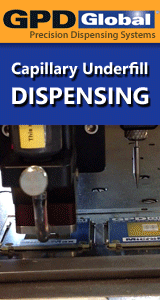Printed Circuit Board Assembly & PCB Design Forum
SMT electronics assembly manufacturing forum.
- SMTnet
- »
- Electronics Forum
- »
- Gold versus HASL finish
Gold versus HASL finish
![]() We are looking for some feedback on this situation. Please l...
- Mar 15, 2005
by
Matt Kehoe
We are looking for some feedback on this situation. Please l...
- Mar 15, 2005
by
Matt Kehoe
![]()
![]()
![]() Comments are:
* J-STD-001 and A-610 committees have elimina...
- Mar 15, 2005
by
davef
Comments are:
* J-STD-001 and A-610 committees have elimina...
- Mar 15, 2005
by
davef
![]()
![]()
![]() -If the aperture volume is the same, there will be more sold...
- Mar 15, 2005
by
jdengler
-If the aperture volume is the same, there will be more sold...
- Mar 15, 2005
by
jdengler
![]()
![]()
![]() Mat,
Are you sure you should be using SnPb HASL boards if y...
- Mar 15, 2005
by
Darby
Mat,
Are you sure you should be using SnPb HASL boards if y...
- Mar 15, 2005
by
Darby
![]()
![]()
![]() The hasl joint looks fuller (and is easier to inspect)becaus...
- Mar 15, 2005
by
The hasl joint looks fuller (and is easier to inspect)becaus...
- Mar 15, 2005
by
- SMTnet
- »
- Electronics Forum
- »
- Gold versus HASL finish







